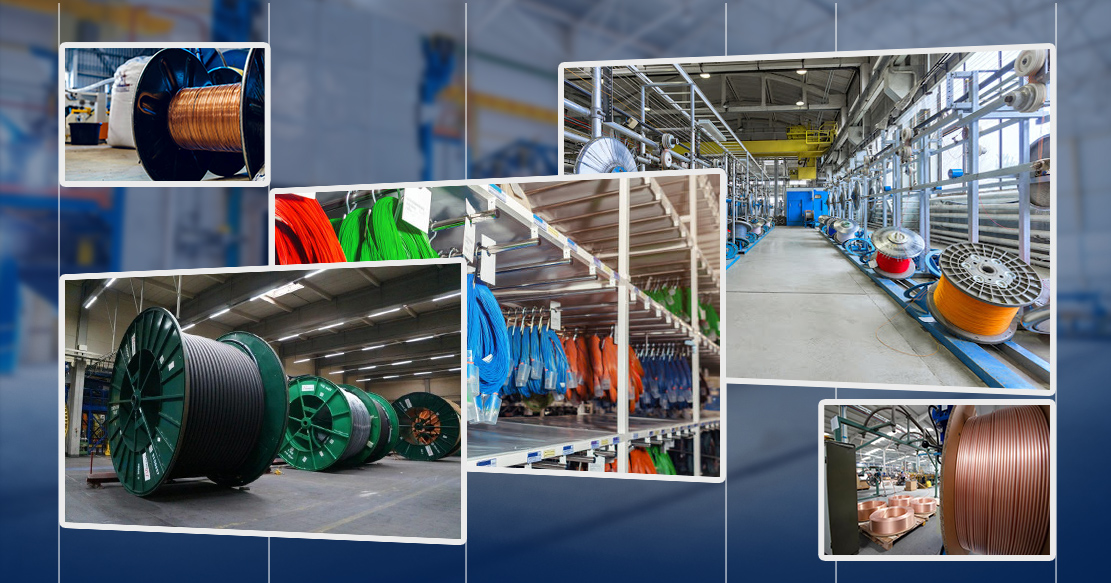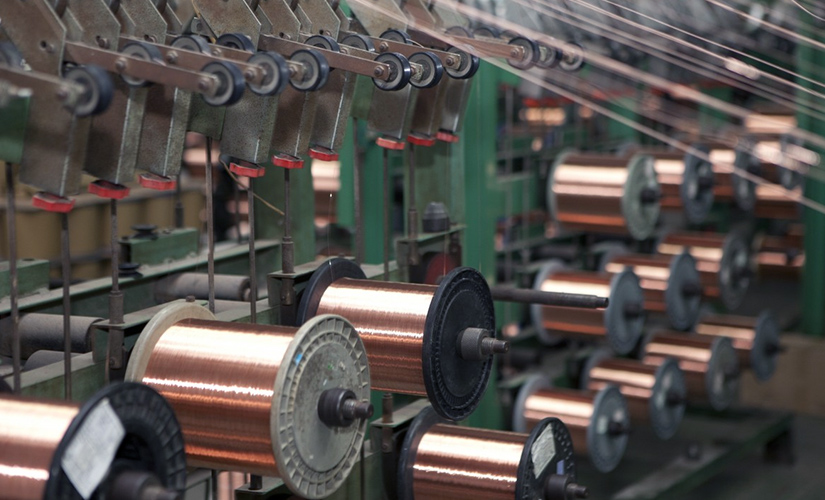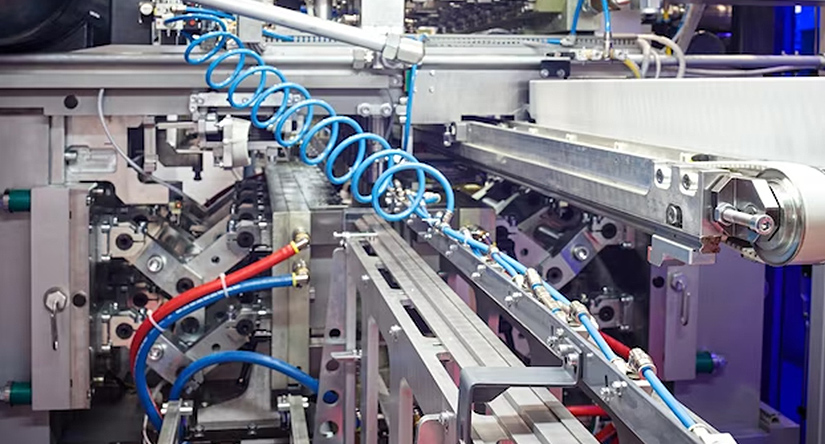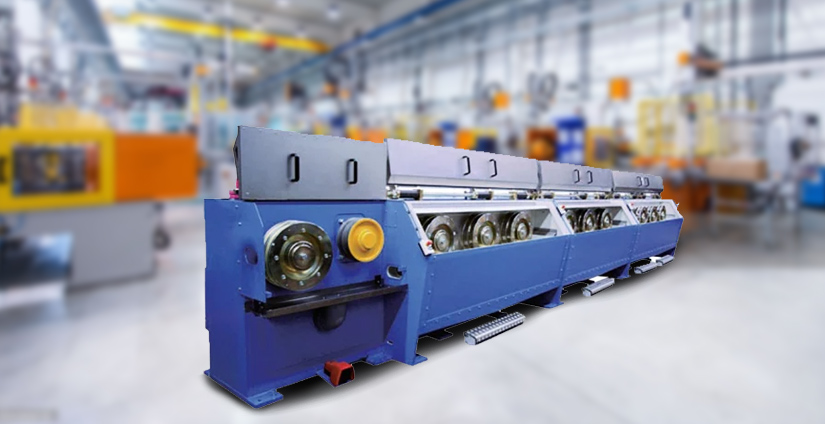
A Holistic View of Wires and Cable Manufacturing
Wire and cables are indispensable in the electrical industry, empowering today’s world and societies. Wire and cable manufacturing, a part of the core industry and technological advancement, has improved the process and led to many innovations.
The fine-tuning of conventional manufacturing practices has evolved a normal conductor from a solid to a multistrand. The wire drawing machines, extrusion machines, etc., have automated the regular task, streamlining the manufacturing process.
Wire and Cable Manufacturing Differs From Electromechanical Products Production

The manufacturing of wires and cables differs from the production process of most electromechanical products. Electromechanical products usually assemble into parts and multiple parts. Then, these multiple-parts get assembled into a single product. We measure the product by the number of pieces.
Wires and cables have the length as their basic unit of measurement. All wires and cables are made by processing conductors, adding insulation, shielding, cable-forming, and sheathing layer by layer to the periphery of the conductor. The layers of overlap increase with the increase in product complexity.
The wire and cable manufacturing process has the following characteristics.
 Large-Length Continuous Stacking Combined Production Method
Large-Length Continuous Stacking Combined Production Method
The method impacts the production process and equipment layout. It demands a balancing combination of equipment and the production site layout according to the product and production volume. Production organization management should be scientific and reasonable, and quality management consistent throughout the production process.
 More Production Processes, Large Material Flow
More Production Processes, Large Material Flow
Wire and cable manufacturing involves various processes, from smelting and pressure processing to chemical technologies. Materials of different categories, varieties, and specifications get used in large quantities. Material flow is large, so rational and dynamic arrangement and management needed.
 Special and Dedicated Equipment
Special and Dedicated Equipment
The process uses a special extrusion machine series, wire drawing machine series, stranding machine series, and winding machine series to meet the structural and performance requirement of the cable products.
Common and Crucial Steps of Wire Manufacturing

Wire and cable manufacturing involves the following crucial steps to complete the production process.
1. Wire Drawing
Wire drawing is a metal-working process that helps reduce the wires’ cross-section by pulling the wire through a single or series of dies. The process is done at room temperature but may be performed at elevated temperatures for large wires to reduce forces.
First, the wire gets prepared by shrinking, hammering, filling, rolling, or swaging to make it fit through the die. As we pull the wire through the die, its volume remains the same, diameter decreases, length increases, and material properties change due to cold working. Wire requires more than one draw to get the desired size.
2. Annealing
The wire drawing process creates stresses in the wire leading to a higher strength that may not be desirable for specific applications. During the annealing process, we heat the wire to a temperature that the stress caused during the cold working releases. It makes the wire more ductile and metal homogenous in structure.
We perform annealing in a pure hydrogen, oxygen, or argon atmosphere to prevent reactions between heated wire and surroundings. The types of annealing are reel-to-reel or strand annealing and batch annealing. In reel-to-reel annealing, the wire gets heat treated. And it gets fed through the furnace and wound onto another reel. We perform batch annealing in small volumes in a designated furnace.
3. Twisting and Stranding
Stranding is a process - twisting small-diameter monofilaments into large cross-sectional conductive cores according to specific rules. Stranded wires gain better flexibility and electrical performance than single wires.
The types of stranding are normal stranding and Irregular stranding.
 Normal Stranding
Normal Stranding
Normal stranding includes average concentric single strand and normal concentric stranding. In average-concentric single strand, a single-stranded wire of the same diameter gets stranded regularly in concentric circles layer by layer. And in normal concentric stranding, stranded wire made of multiple strands of ordinary stranded wire or bundle wires, gets concentrically stranded.
 Irregular Stranding
Irregular Stranding
We form stranded wire by multiple single strands in the same direction and not complies with the stranding rules. The position of a single strand is not specific. It is challenging to maintain the round shape of the strands.
4. Extrusion
The wire passes through an extruder after getting soft and flexible. Here, a coating of plastic or other insulating material gets applied.
The extrusion process converts plastic raw materials into a continuous profile, protecting against external damage and physical wear.
For thermoplastic and thermosetting materials, internal machine friction and external heat resistors get used to obtaining a finished or semi-finished product, shaping material by forcing it through a die. And for rubber extrusion, many different vulcanization solutions get engineered to heat the insulation after the die trough.
5. Cabling
After preparing the basic components of a cable, we need to assemble the cables, according to different utilities. The process gets performed in a cabling station.
 Conductor
Conductor
The most frequently used conductor for electrical cables is aluminum or copper.
 Insulation
Insulation
We place an insulator cover over the conductor to prevent current leakage. Several insulation materials used are PVC, EPR, XLPE, etc. The insulation capacity and thickness of the material determine the cable's maximum service voltage.
 Screen
Screen
An electrical covering called a screen insulates the signals that circulate in the cable from possible external interferences.
 Armoring
Armoring
Armoring is the mechanical covering that protects the cable from external damage due to knocks, rodents, or any other potential damage source.
 Outer Sheath
Outer Sheath
Outer-sheath is an outer polymer covering for protection. It protects the conductor and insulation from external elements that may change the cable's electrical and mechanical properties.
6. Quality Control
The cables undergo rigorous quality control checks such as voltage tests, and adherence to international standards, such as IEC 60502-1, IEC 60227, BS 6004, etc. It ensures cables are free from defects and will work perfectly.
Technology Transforming the Wire and Cable Manufacturing

The manufacturing of wires and cables has evolved with advancements in technology. Manufacturers are now using technology to ease their wire and cable-making process. Some of the ways technology has changed the industry are
 Copper Wire or Aluminium Wire Drawing Machines
Copper Wire or Aluminium Wire Drawing Machines
Wire drawing machines have six parts: Calamine stripping machines, Wire sharpening machines, Wire drawing machine, Grafiling machine, PLCs, and Wire joining welding machines. Now, manufacturers need not keep a lot of different diameters of black wire or galvanized wire. The machine can process steel wire and metallic mesh in various applications.
 Cable Stranding Machines
Cable Stranding Machines
Stranding machines have automated the repetitive and boring tasks in the cable manufacturing process. The use of the type of stranding machine gets defined by the wire diameter to get synthesized. The larger the wire diameter, the stronger will be machine's twisting force. We can use an ordinary machine for twisting a small number of wires with thin wires.
 Extrusion Machines
Extrusion Machines
Cable extrusion machines are now get incorporated with IoT-enabled hardware. They are available in single, dual, and triple extrusion systems and can manage various products.
Gloster Cables- A Quality Wire and Cable Manufacturer
Gloster Cables is a renowned name in wire and cable manufacturing. The company lists the top 10 cable manufacturers in India by Industry Outlook. The organization holds TUV certification for solar cables, ISO:9001-2015 certification, ISO:14001-2015 certification, and NABL accreditation.
Gloster brings a range of wires and cables from PVC and XLPE insulated cables, FS and FR cables, instrumentation cables, Solar cables, and many more. The company follows a stringent R&D and quality policy adhering to relevant standards to bring innovative and quality wires and cables.
CONTACT US